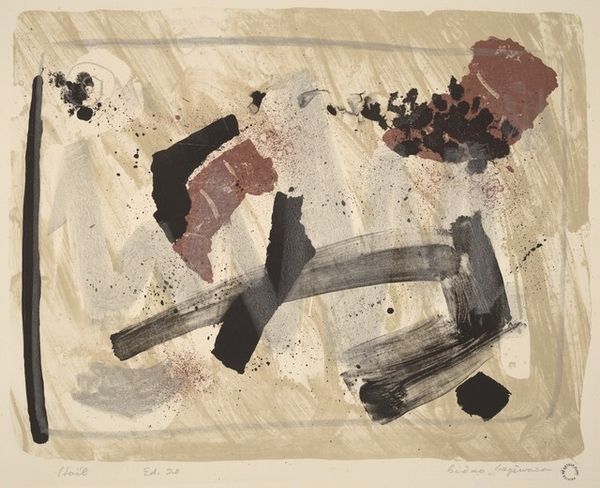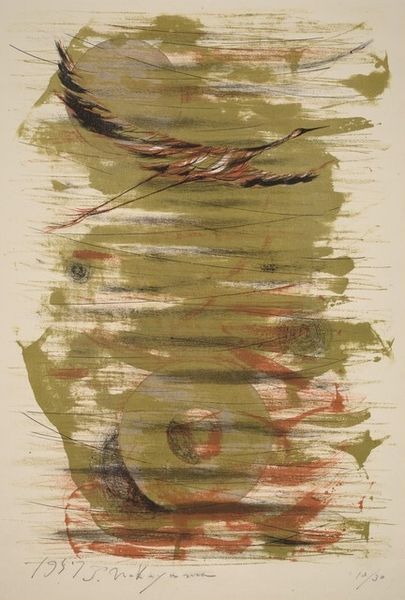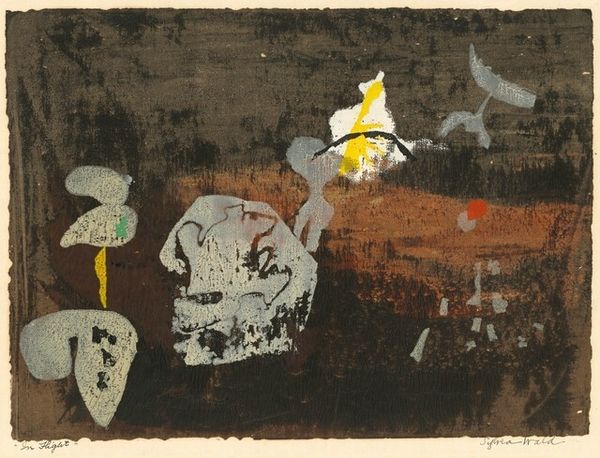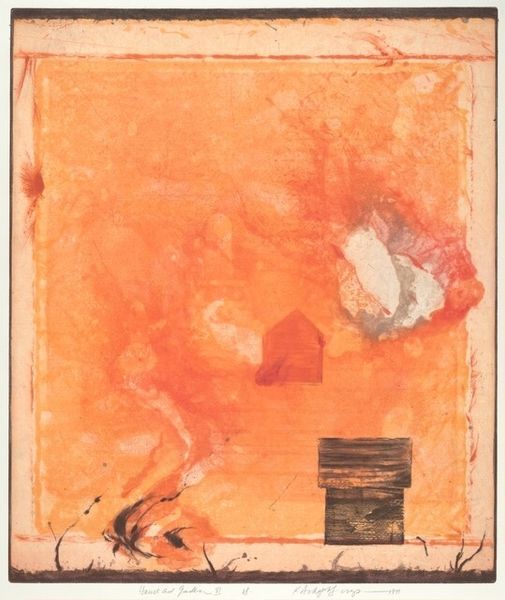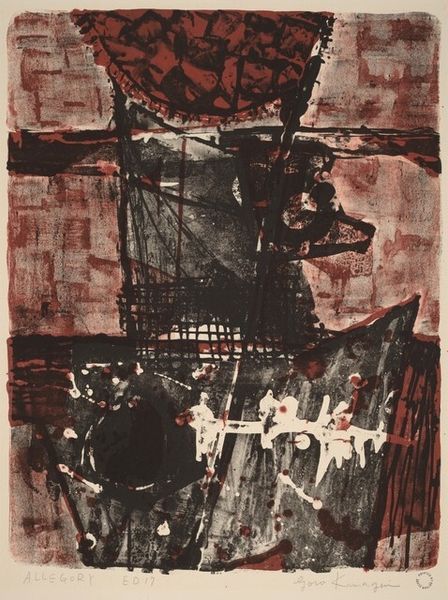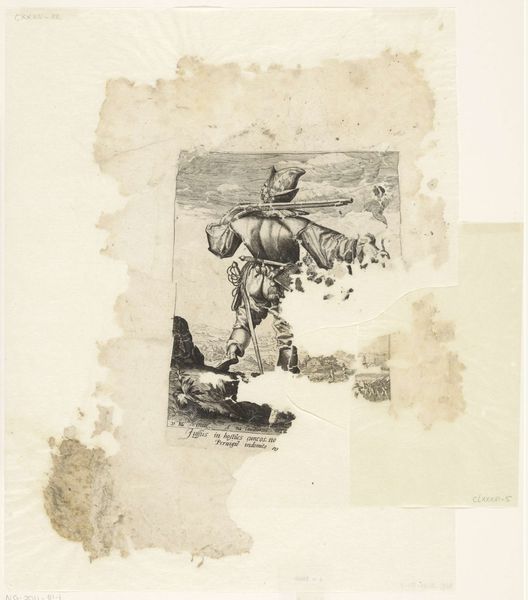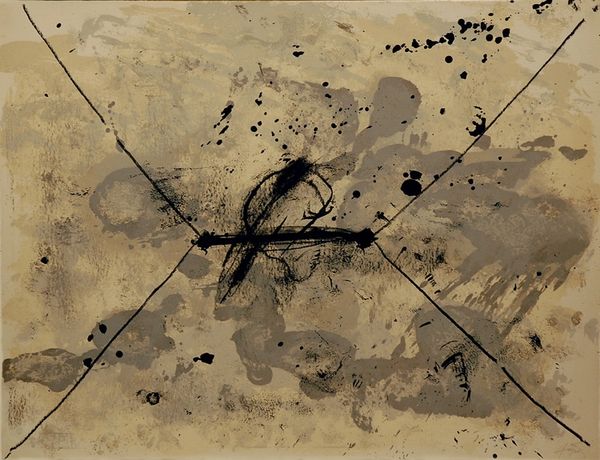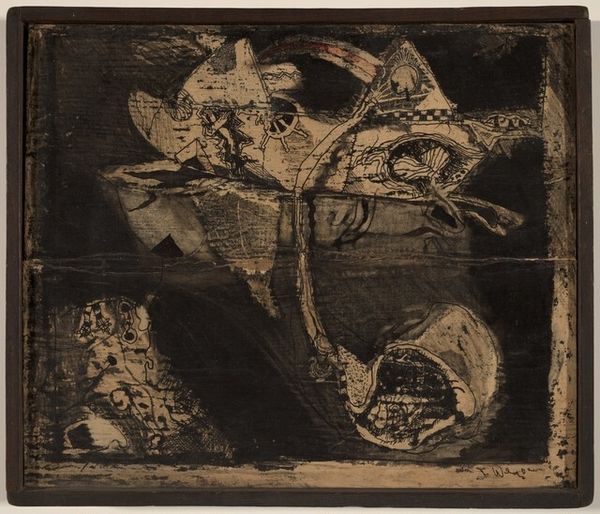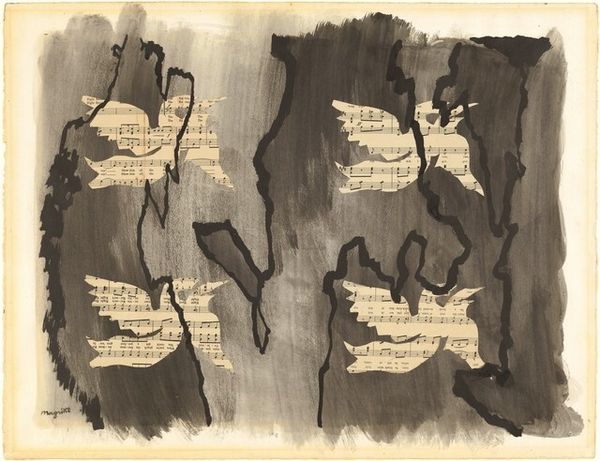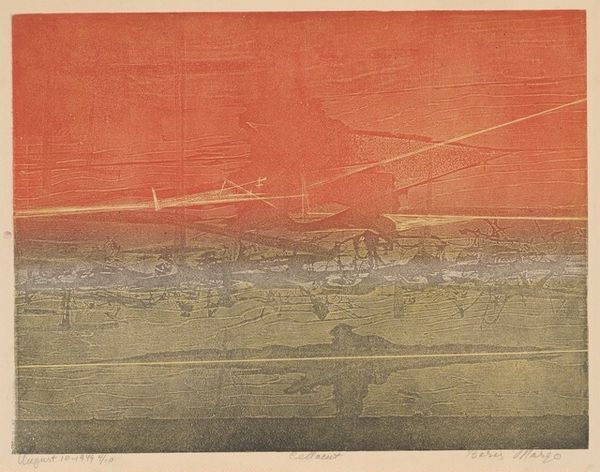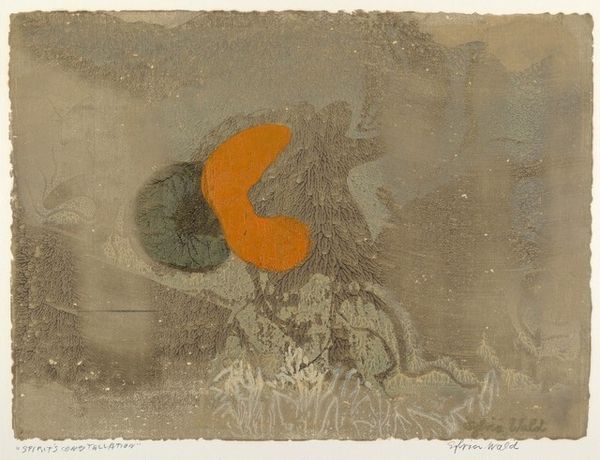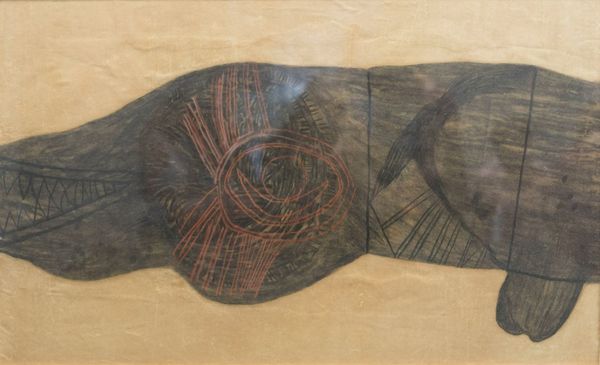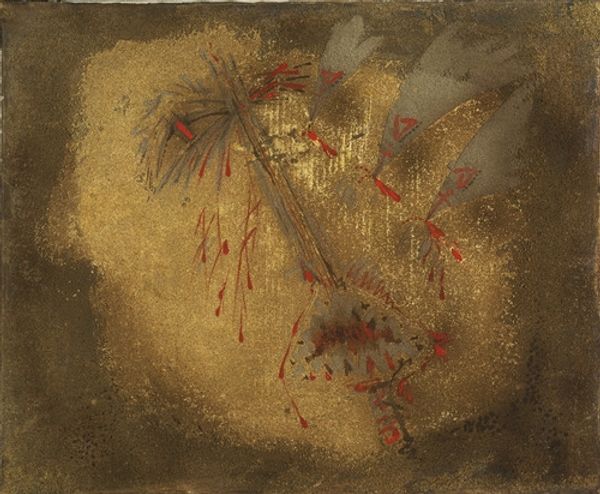
#
water colours
# print
#
figuration
#
geometric
Copyright: National Gallery of Art: CC0 1.0
Kazu Wakita made this print, Boy and Bird, using lithography. With this process, Wakita would have drawn an image onto a flat stone or metal plate with a greasy crayon. The stone is then treated so that ink adheres only to the drawn areas, while repelling it elsewhere. Each print is then made by transferring the inked image to paper. The lithographic process allows for creating a textured and layered effect as seen in the earthy tones and subtle gradations of color. The soft texture and tonal variations gives depth to the image, evoking a sense of warmth and nostalgia. The work feels handmade because of the nature of lithography, and the imperfections that come with it. The print becomes an intimate expression of Wakita’s craft. Understanding the labor-intensive nature of lithography and the artist’s hand gives you a greater appreciation of the image. By considering the materiality and process, we recognize the artist’s labor, skill, and artistic vision, and the way those link to broader issues of labor, class, and craftsmanship.
Comments
No comments
Be the first to comment and join the conversation on the ultimate creative platform.
